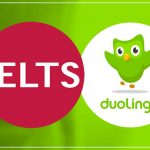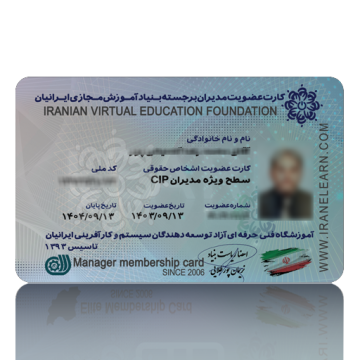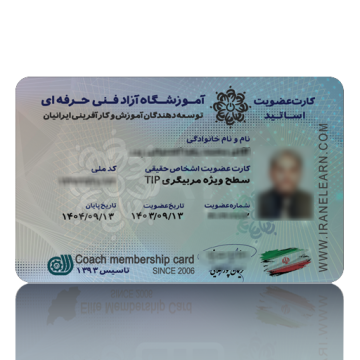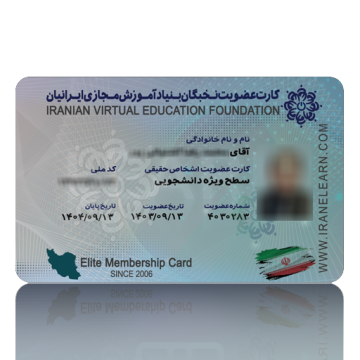Get ready for IELTS degree
Chapter of this Course is about : 1) Listening 2) Grammer 3) writing 4) Reading 5)speaking.
IELTS is abbreviation of this sentence (International English Language Testing System).
The first book contain 12 unit. Get ready for IELTS listening:
Unit one
Unit one topics is about friends aboard. In this unit you can learn about information that you need on travel. We learn about timetable, Countries, Nationalities. For example:
Nationalites are often formed by changing of the names of countries.
Unit two
Unit one topics is about food and cooking. this unit introduce type of food, cooking methods and measurement units required for cooking.
Unit three
In the third lesson, we learned what we need for good presentations.
Unit four
This course introduces jobs and we learned how the preposition change the meaning of the verb.
Unit five
In the fifth lesson, Getting to know the buldings in a university that we call campus services and how can find the place on the plan.
Unit six
In the sixth lesson, Getting to know with different kind of criminals and When we connect with which one we stay safe.
Unit seven
The aims of unit seven is related to studying, exam and revision and we learnd about the rules to formed a comparative sentences.
Unit eight
The aims of unit seven is related to shoping and spending habits. we getting to know with shoping option that we use on market.
Unit nine
The aims of unit ten is related to hobbies, interests, sports online games, music, collections. We divide our activities into different categories according to their type.
Unit ten
Unit ten is about work life balance. Which are your activities is the way that we use for manage our time when we are working and studying.
Unit eleven
In this unit we comparing the cultures across the world, according to language, food, dress, housing and etc.
Unit twelve
In the unit twelve we getting to know with a different way of using the ocean or exploring the oceans life, minerals.
The second book contain 25 unit. Get ready for Cambridge self-study grammer for IELTS.
۱ present tenses:
a) Present simple
Verb/verb+(e)s
Do/does not+ verb
Do/does+verb?
b) Present continuous
Am/is/are+verb+-ing
Am/is/are not+verb+-ing
Am/is/are+verb+-ing
۲ past tenses
a) Past simple
Verb+-ed(or-d)
Did not+ verb
Did…+verb
b) Past continuous
Was/were+verb+-ing
Was/were not+verb+-ing
Was/wre…+verb+-ing?
c) Used to and would
Used to/would+infinitive
Did not+usedto+infinitive
Did…used to+infinitivr?
۳ present perfect
a) present perfect simple
have/has+past participle
have/has not+ past participle
have/has..+past participle?
b) present perfect continuous
have/has been+verb+-ing
have/hasnot been+verb+-ing
have/has…been+verb+-ing?
۴ past tenses 2
a) past perfect simple
had+ past participle
had not+past participle
had…+past participle?
b) past perfect continuous
had been+verb+-ing
had not been+verb+-ing
had…been+verb+-ing
۵ Future1
a) present continuous
b) will
will+verb
will not (won’t)+verb
will…+verb?
c) going to
am/is/are+goingto+verb
am/is/are not+going to+verb
am/is/are…+going to+verb?
۶ Future2
a) present simple
am/is/are about to+ verb
am/is/are not about to+ verb
am/is/are….+verb?
b) be about to
am/is/are about to+verb
am/is/are not about to+verb
am/is/are…+verb?
c) Future continuous
Will be+verb+-ing
Will not (wont) be+verb+-ing
Will… be+verb+-ing?
d) future perfect simple
will have+ past participle
will not (wont) have+ past participle
will…+have+past participle?
e) future perfect continuous
will have been+verb+-ing
will not (wont) have been+verb+-ing
will..+have been+verb+-ing
۷ Countable and uncountable nouns
We can use the following word to say how many or how much.
_________________________________________________________________________________________________________________________________________
جهت ثبت نام در دوره آموزشی آمادگی آزمون IELTSبر روی تصویر فوق کلیک نمایید
دوره غیر حضوری است و محتوای الکترونیکی در قالب CD یا DVD به آدرستان ارسال می گردد
پس از پایان گواهی و مدرک معتبر آمادگی آزمون IELTS با قابلیت ترجمه رسمی دریافت می نمایید
مشاوره رایگان: ۰۲۱۲۸۴۲۸۴ و ۰۹۱۳۰۰۰۱۶۸۸ و ۰۹۳۳۰۰۲۲۲۸۴ و ۰۹۳۳۰۰۳۳۲۸۴ و ۰۹۳۳۰۰۸۸۲۸۴ و ۰۹۳۳۰۰۹۹۲۸۴
_________________________________________________________________________________________________________________________________________
۸ referring to nouns
Countable nouns
۱- Articles
• We use a/an
-To refer something for first time.
– to refer to any from a group.
– to classify people or thing as belonging to group.
– to say what job somebody does.
• We use the when the listener/reader knows which thing we mean.
• We use no article with plural uncountable nouns to talk generally.
۲- Demonstratives: this, that, these, those
۳- Possessives
We use possessive determiners (my/your/his/her/its/our/their)to tell us what or who something belong to.
۴- Inclusives
• Every, each are used with a singular noun and verb
• Both, neither, either refer to two people or thing.
We use both+plural and either/neigher+singular noun.
• Some and any
Some in generally used in positive statement.
Any usually used in negatives and qustions.
۹ pronouns and referencing
۱٫ Personal and possessive pronouns.
۲٫ Reflexive pronouns
۳٫ Some special situations
• It
• You and we
• They
• One and ones
۱۰ Adjectives and adverbs
۱-adjective
We can use adjective before nouns.
-After the fowllowing verbs.
-After find/ make/keep+object.
-With other adjective or nouns to describe a noun.
۲ adverb
Adverb give information about verb, adjective or other adverb.
۱۱ Comparing things
۱- Comparing adjective.
We use comparative adjectives to compare two or more things, people or places.
۲- Comparing adverb
۳- Other ways of comparing
۴- Comparing quantities
For plural or uncountable nouns we can compare quantities with more or most.
۱۲ The noun phrase
Anoun phrase is a group of words with a noun as it main part. Information about the noun can be before the noun and/ or after the noun.
۱- Noun+ prepositional phrase.
۲- Noun+ past participle clause.
۳- Noun+ present participle (-ing) clause.
۴- Noun + to- infinitive clause.
۱۳ Modals1
Modal verb (can, could, may, might, must, will, would, shall, should, ought to, need) are auxiliary verbs that give information about ability, possibility or necessity.
۱- Ability.
We use the following verb to talk about ability.
۲- Other uses of can.
– We use can to mean somethimes.
– We olso use can to ask for and give permission.
۳- Possibility.
We use must, may, might, could, couldn’t and cant when there is some evidence, information or belif that something is probably or possibily true (or not).
۴- Expressing possibility and opinions in written texts.
۵- Alternative to modals
۱۴ Modals 2
We use expressions of obligation and necessity when there is a need to do something. This need can be internal (the speaker feels it is necessary) or external (rules or the situation make it necessary).
۱-Obligation and necessity
۲- No obligation
We use not have to, not need to and needn’t to suggest that is no obligation or necessity to do something.
۳- Suggestions and advice
We can use modal verbs should(n’t) and ought (not) to make suggestions or give advice
۴-Adverbs
Adverbs like also, always, never, sometimes, just and only come after modal verbs.
۵-Formal written English
Verbs of obligation, nessity and suggestion are common in formal and academic writing when giving options.
۱۵ Reported speech
۱- Tense changes.
۲- Reporting verbs.
۳- Time references etc.
۴- Reporting questions.
۱۶ Verb+ verb patterns
۱۷ likelihood based on conditions 1
a) zero conditional
b) first conditional
c) second conditional
d) other words to introduce a condition
۱۸ likelihood based on conditions 2
a) third conditional
b) mixed conditonal
c) wishes and regrets
d) should(n’t)have
۱۹ prepositions
a) verb+preposition
b) adjective+preposition
c) non+ preposition
d) prepositional phrases: by, in, at, on, of
۲۰ relative clauses
a) relative pronoun
b) defining relative cluses
c) non-defining relative clauses
d) prepositions
۲۱ Ways of organizing texts
a) the subject
b) Ellipsis: leaving words out
c) Organising information in a text
d) Adding emphasis or contrast in a text
e) Repeating ideas in a text
۲۲ The passive
a) the passive: form
b) the passive: use
c) reporting with passive verbs
d) have something done
e) need+-ing
۲۳ Linking ideas
a) way of Linking ideas.
-We use conjunctions (e.g. but, because) to join two clauses in one sentence.
Clause 1+but+clause2
Clause 1+because+clause2
-We can use adverbial expessions (e.g. consequently, however) to connect ideas in separate sentences. These usually go at the beginning of the sentence or cluse.
-Some adverbial expressions (e.g. therefore, however, also) can be used in a variety of positions.
-We can use prepositions (e.g. in spite of, because of) before a noun phrase or an –ing form.
b) Linking expressions
۱) Adding inforation
conjunctions: and as well as
adverbials: also, anyway, besides, furthermore, in addition, likewise, movreover, similarly.
We use these expression to give additional information.
۲) Sequencing
Adverbials: first, next, after that, then; secondly, finally
Firstly, secondly and finally are used to order points in argument.
First, next, after that and then describe the order the order of activities in a process.
۳) Cause, reason, result
Conjunctions: because, so
Adverbials: therefore, consequently, so, thus, ad a result
Prepositions: because of, due to, on account of, owing to.
– because introduces the reson for something, and so introduces the result.
-therefore, consequently, so, thus, and as result introduce the result of a situation or action.
-we use because of, due to, an account of and owing to to introduce the reson for something.
-we can use due to, on account of and owing to+ the fact that with a clause.
۴) Contrasting
Conjunctions: but, althought, thought
Adverbials: alternatively, however, incontrast, nevertheless, on on the contrary, on the other hand, yet
Prepositions: in spite of, despite.
-We use but between two contrasting ideas
-Although can come at the beginning or in the middle of two contrasting ideas. We use acomma between the two clauses.
-We use in spite of and despite+noun/-ing at the beginning or in the middle of two contrasting ideas.
۵) Giving examples
Conjunctions: that is to say, in other word, that is (i.e.), for example.
-We use these expressions to link two clauses that give the same information in different way or to give examples.
۲۴ showing your position in a text
a) pronouns
In formal writing, first person pronouns (e.g I, you, we) are not very common, but we can use them to.
• Give our opinion of the topic being discussed with I or we.
• Show we are part of the group and identify with the reader, usually with we or us.
b) Adverbs
-To show our attiude, feeling or assessment of something we can use.
• Single adverb (e.g. actually, frankly, fortunately, unfortunately, personally, luckily, interestingly, naturally, surprisingly).
• In speech we often use actually to correct someone or to show that we disagree with something that has been said.
• Adverbial phrases of opinion (e.g. in my/our view, in my opinion).
-To soften the tone of an argument we can use adverbs of possibility (e.g. certainly, definitely, maybe, perhaps, possibly, presumably, probably).
-To show that the information has come from somewhere/someone else, we can use adverbial phrases that report the views of other people (e.g. apparently, according to (somebody), evidently):
c) Verbs
-To show our opinion or feeling we can use verbs such as thick, suppose, belive, feel, guess.
-When the subject is I, it is sometimes proeceded by personally.
-To show that we are expressing our ideas rather than facts or to sound more cautious can use modal verbs of possibility(e.g. may, might, could, must, can) and verbs like seem or appear.
d) adjectives
we can use adjectives
-to show our feeling (e.g. glad, delighted, overwhelmed).
-with it+ be+adjective+that to show possibility and opinion (e.g. clear, possible, probable, likely).
۲۵ Nominalisation in written English
-In spoken English we usually use a subject+ verb to describe an event:
Subject+verb
-In formal written language we use language that is less personal, so we often use a noun form instead of a verb.









